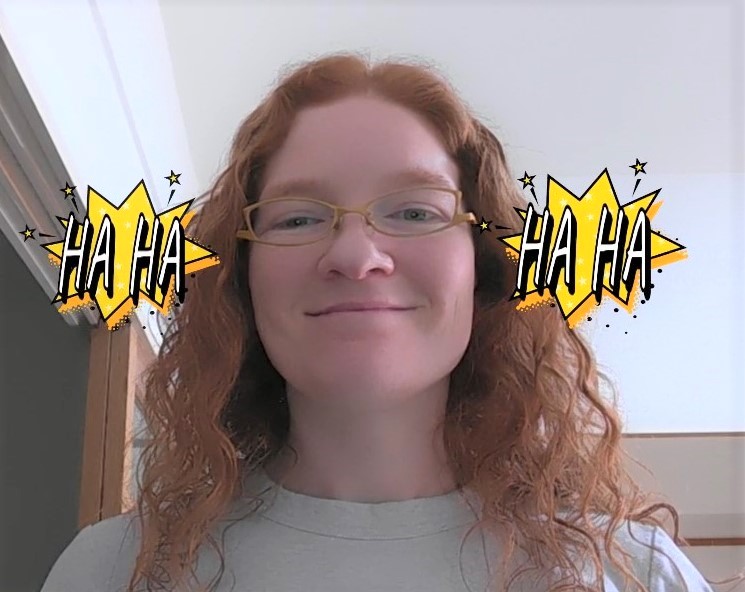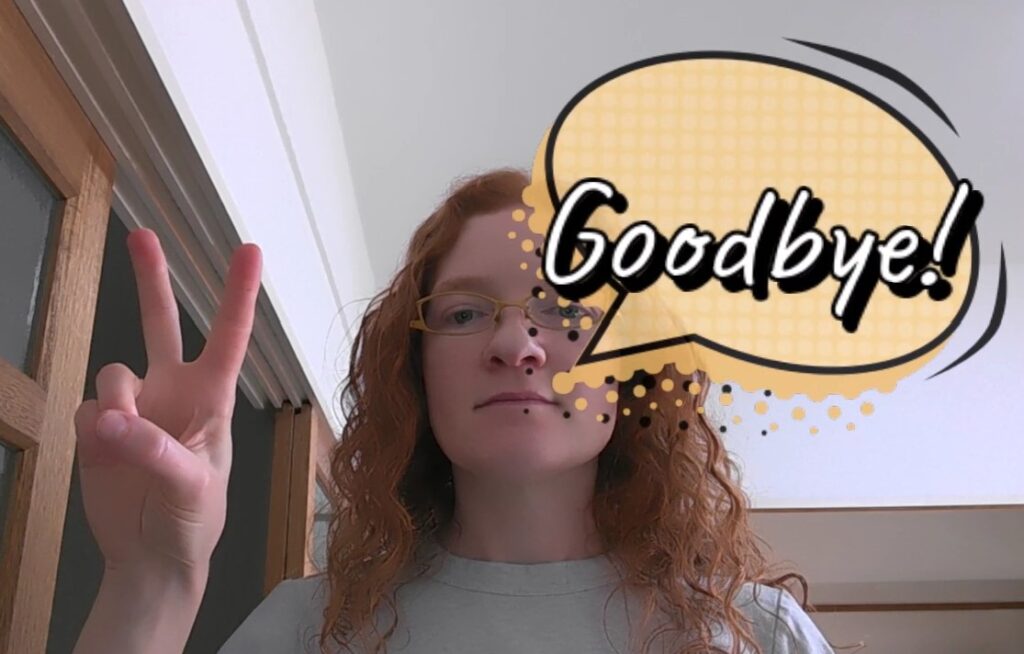Snap Camera – Use Gestures to Communicate in Any Video Conference System
By Betsy Lavolette, Kyoto Sangyo University

Language teachers use video conferencing tools such as Zoom and Teams for many purposes, including teaching, meetings, professional development, and socializing. At times, it is more convenient to use a gesture to communicate, rather than unmute your microphone and risk interrupting other participants to make a quick reply or reaction. Adding Snap Camera with Meeting Gestures Lens makes your gesture reactions completely clear to everyone, as well as fun to watch.
The eight gestures available using Snap Camera with Meeting Gestures
Basic information:
| Name of tool | Snap Camera + Meeting Gestures Lens |
| URL | Snap Camera: https://snapcamera.snapchat.com/
Meeting Gestures Lens: https://www.snapchat.com/unlock/?type=SNAPCODE&uuid=16839bd69c67492696d6ccf1296ad31e&metadata=01 |
| Primary purpose of tool | Enhance gestures via video conference apps |
| Cost | Free |
| Ease of use | Easy |
| Terms of service | https://snapcamera.snapchat.com/download/ |
When you use this virtual camera, making various gestures will trigger a cartoonish text in English to appear on the screen. Here are the supported gestures:
- Wave: “Hello”
- Smile: “Ha ha”
- Thumbs up: “Yes”
- Fist: “No”
- Devil horns: “Awesome”
- Moving off screen: “I’ll be right back”
- Index finger up: “Question”
- Peace sign: “Goodbye”

Pedagogical applications
Because of the time delays inherent in video conferences, you may have had the experience of accidentally interrupting students during synchronous classes. This can be frustrating and discouraging for everyone involved. Rather than unmuting your microphone and potentially cutting into a student’s continued speech, you could respond using a gesture. In addition, students are sometimes watching to see if the teacher has unmuted their microphone, taking this as a signal that the students should stop talking and listen. Using the Meeting Gestures without unmuting may have the added benefit of reducing teacher speaking time and increasing student speaking time.
Twenty questions is a common game used in the language classroom that could take advantage of Meeting Gestures. In this version of the game, the teacher would have a noun in mind, and the students would ask yes/no questions to narrow down the possibilities and guess the noun. The teacher can leave their microphone muted and respond using the “yes” and “no” gestures. This gives the floor for speaking completely to the students and forces them to use only questions that can be answered with “yes” or “no.” In this way, the students focus on meaning during the game itself, and the teacher can provide form-focused feedback after the game is finished.
How to install and use Meeting Gestures
Note that while both Snap Camera and Snapchat are products of the same company (Snap Inc.), you do not need a Snapchat account to use Snap Camera. To use the Meeting Gestures lens, first install Snap Camera. Then, search for the lens by copying and pasting the link (https://www.snapchat.com/unlock/?type=SNAPCODE&uuid=16839bd69c67492696d6ccf1296ad31e&metadata=01) into the Snap Camera search box.
After you’ve installed the camera and the lens, you can use it in most video conferencing software. For example, you switch the camera that Zoom uses to “Snap Camera.” Now you can communicate without unmuting your microphone. For further fun, you can add many different lenses, such as ones that add silly hat, animal ears, medical masks, and many other options. However, you can only use one lens at a time, so these options are not compatible with Meeting Gestures.
This add-on can be fun and useful, but caution is needed. First, it’s easy to trigger the reactions when you aren’t intending to, such as by scratching your head. Second, certain gestures may not work for you, depending on the technology you use and other factors. In my case, I cannot trigger the “haha” text on my Mac, no matter how broadly I smile. Finally, the developer of Meeting Gestures, Cameron Hunter, could remove or change the lens at any time without warning, so I do not suggest that you make using it an integral part of your lesson plans. Check the developer’s Twitter feed for updated information.
I successfully tested this tool on Mac (Zoom, but not Teams, Skype, or Google Meet) and Windows (Zoom, Teams, Skype, and Google Meet).
An adventurous programmer could use Lens Studio to recreate this idea in various languages. I am looking forward to seeing versions of this tool for all the languages we teach.


